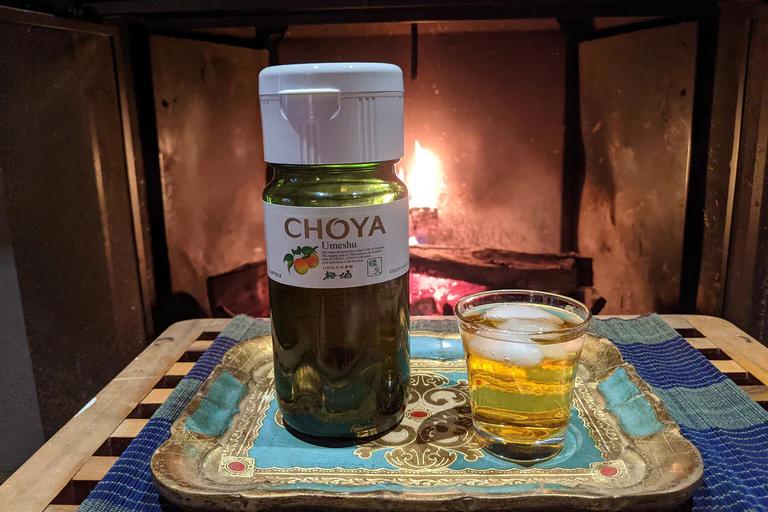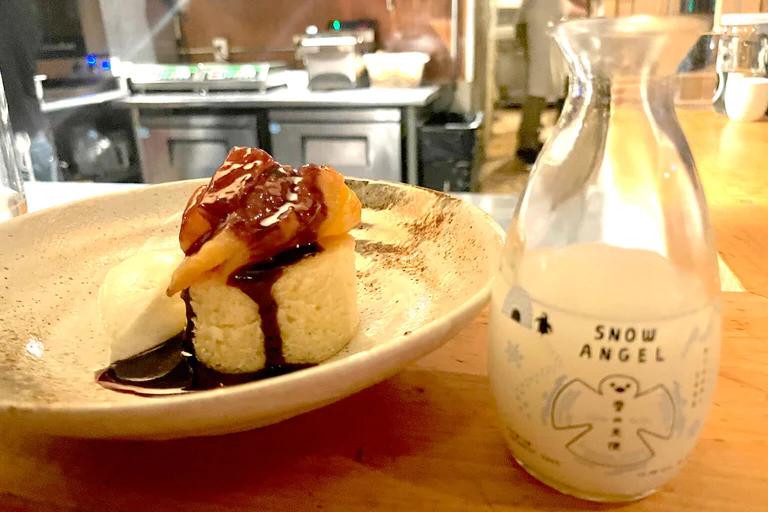The changing climate affects many parts of society, including the sake industry. In recent years, breweries have been challenged to adapt to new solutions to ensure the continuation of this traditional and beloved beverage. The northern island of Hokkaido has become known as the new frontier of sake production.
Climate change and rice
The average annual temperature in Japan is rising at a rate of 1.30 C per 100 years, with frequent high-temperature years since the 1990s. As the temperatures rise, typhoons and heavy rains intensify, causing landslides, flooding, and wind damage. These conditions are affecting the future of Japanese agriculture and rice.
Sake rice is especially vulnerable to severe weather conditions. This is because sake rice varieties tend to be taller and heavier than table rice, with types like Omachi reaching 150 centimeters with 27.3 grams of grains, compared to just 90 centimeters and 22 grams for the popular Koshihikari. (However, some table rice strains like Koshihikari can be used in sake brewing.) The top-heavy crops are prone to falling over and getting damaged by high winds or heavy rain. Sake rice strains can be difficult to grow at the best of times. A changing climate can ultimately lead to a rice shortage and decreased sake production.
Record-high temperatures can also affect the quality of the rice grains. Farmers in Honshu have seen an increase in immature rice grains due to the high temperatures between August and September, with cracks in the grains, decreased starch content, crumbly and sticky characteristics, and other negative attributes that make the rice unusable for sake production.
Another issue is that climate change is causing changes that can affect the growth and fermentation of the koji mold, a key ingredient in the brewing process of sake, which can affect the taste and quality. The mold requires specific temperatures and humidity levels to grow, and changes in the climate can affect these conditions, altering the flavor profile entirely.
To mitigate these effects, the northern island of Hokkaido has become the new frontier of sake. While it has not historically been known for high-quality rice or sake, Hokkaido rice and sake have been winning awards and recognition across the globe.
Let’s take a dip into the world of Hokkaido sake.
Where is Hokkaido?
If you look at a map of Japan, Hokkaido is the northern island that resembles a diamond or seahorse head (depending on your imagination). It’s the second biggest island after Honshu, the main island. It’s known for its beautiful natural parks, ski resorts, agriculture and seafood.
Hokkaido was historically not part of Japan and was inhabited by the Ainu, an indigenous population, before it was overrun in the 17th century by Japanese settlers seeking the area’s abundant resources. It was colonized, formally incorporated by Japan, and renamed Hokkaido in 1869.
Hokkaido rice and sake breweries
Hokkaido has relatively cool summers and snowy winters, but it wasn’t known as a rice-growing region despite its vast agricultural land. Many called Hokkaido rice inferior in the past and said the climate was too cold to produce quality rice. It was even called “Yakkaido kome やっかいどう米” (“yakkai 厄介” meaning “embarrassing” or “awkward,” “do” (as in Hokkaido), and “mai 米” meaning “rice”). No doubt, it was a cruel nickname for the Hokkaido rice industry.
But over time, rice farmers improved their farming methods and bred strains of rice that could withstand the colder temperatures of Hokkaido. Nowadays, Hokkaido boasts the second biggest prefecture for the rice harvest, producing about 59,000 tons. (Niigata produces 670,000 tons.) Hokkaido rice, such as Yumepikari and Nanatsuboshi, has even been winning accolades and awards.
Breweries in the southern region and aspiring brewery owners have taken note of the new opportunities in the once-scorned northern area. According to the Hokkaido Sake and Shochu Makers Association, there are 17 breweries in the prefecture — a 150% increase over the past five years.
Michizakura (三千櫻)
Michizakura is the most famous brand that relocated to Hokkaido. It was founded in Nakatsugawa, Gifu prefecture (central Japan), in 1877.
The sixth-generation owner Koji Yamada decided to relocate the brewery in October 2020 due to experiencing difficulty controlling the brewing and cooling temperatures in their aging facility.
Higher temperatures result in faster fermentation, and temperature changes complicate their efforts to produce their ideal sake consistently. After much publicity by the Japanese media, they relocated to Higashikawa, Hokkaido, a small town of just 8,300 residents. It became the town's first sake brewery, and one of Japan's very few “publicly built and privately operated” breweries.
They work with local farmers to increase their rice crops and use locally grown Yamadanishiki, as well as other types of sake rice. They also use the nearby mountain water to produce their Michizakura sake.
Takasago Brewing Company (高砂酒造)
Asahikawa, located in central Hokkaido, once had a thriving sake brewing industry during the late 19th and early 20th centuries, and was even called “the Nada of the north.” While the industry declined during and after WWII due to rice rations and shortages, Takasago Brewing Company struggled to survive and merged with local Ishizaki Brewery to continue production.
The Takasago brewery is famous for its sake tanks, which are buried in the snow to mature. By aging the sake in the snow, the inside temperature is kept at around -2 C. All that’s left to do is let nature take its course.
They also achieved acclaim for their Ichiya Shizuku (literally, “overnight drip”) brand sake produced during the coldest winter months by hanging sake bags in an ice dome to collect the droplets. The -2 C climate-controlled environment made light, pure and clean-tasting shizuku sake, which won fans across the country. However, they had to stop production of this super premium sake in 2016 due to warming temperatures, low snowfall and unstable weather.
While the legendary Ichiya Shizuku no longer exists, Takasago Brewery continues to produce quality sake known for its clear and dry profile.
Try Taisetsu “Junmai Ginjo” on Tippsy
The name Taisetsu “Junmai Ginjo” comes from Mount Daisetsu, a breathtaking mountain range with fresh and abundant water that nourishes the soil to make this sake. Its characteristic mellow yet clean flavor and gentle, sweet aroma highlight the best of Hokkaido sake.
Otokoyama (男山)
The name Otokoyama (literally, “Man Mountain”) is derived from the Iwashimizu Hachimangu Shrine in Kyoto, also known as Otokoyama Hachimangu Shrine, which enshrines many prolific generals. Otokoyama is another Hokkaido-based brewery, but has a different origin story not based on climate change.
Founded in 1661, it is known to be one of the oldest breweries in the country, and was originally based in the Kansai region during the Edo period (1603-1868). It was an extremely popular brand depicted in many traditional Japanese arts, such as kabuki and ukiyo-e, and a favorite of the Tokugawa shogunate.
However, the brewery fell out of popularity in the late Edo period and went out of business due to the Nada sake boom in the early 1800s. It was later revived in 1968 when Yamazaki Shuzo, a sake brewery in Asahikawa, visited the descendants of the Otokoyama brewery family to inherit the once-famous brand for a second chance in Hokkaido.
Otokoyama takes advantage of the pure waters of Mount Daisetsu 大雪山 (literally, “lots of snow mountain”). It won the world’s first Monde Selection Gold Award for Japanese sake in 1977. Despite its macho-sounding name, Otokoyama sake is known for its characteristic smoothness and depth of flavor.
Try Otokoyama “Tokubetsu Junmai” on Tippsy
Otokoyama was a popular sake of the Edo shogunate and people, depicted in traditional Japanese arts. It’s brewed using the quality, mineral-rich mountain water of Hokkaido. This dry and sharp sake with a hint of plum pairs well with sushi and sashimi.
Hokkaido: the new frontier
Despite the challenges of climate change on the Japanese sake industry, Hokkaido is surely the next frontier of high-quality sake. Blessed with a cool northern climate, abundant natural water sources and renewed interest in the region, the clear and crisp sake of Hokkaido will continue to win fans around the world. Do keep a look out for Hokkaido sake on Tippsy, as well as at international sake competitions!
Resources:
“Sake and Climate Change.” SakeGuide.net.
https://sakeguide.net/articles/2017/9/7/sake-and-climate-change
“Local energy sake for SDGs (6) Global warming.” Kobe Shimbun, 2021.
https://www.kobe-np.co.jp/news/keizai/202104/0014263149.shtml
“What is behind the rush of sake breweries in Hokkaido?” NHK, 2021.
https://www3.nhk.or.jp/news/html/20210623/k10013098431000.html
“This year’s brewer’s rice is easy to dissolve and yields are on par with normal years.” SAKETIMES, 2018.
https://jp.sake-times.com/think/study/sake_g_syuzoutekisei_h30
“Sake made in Yukihimuro to be discontinued due to global warming Takasago Sake Brewery.” Nikkei, 2016.
https://www.nikkei.com/article/DGXLZO07639240W6A920C1L41000/
Hokkaido Sake and Shochu Makers Association
https://www.hokkaido-sake.or.jp/















